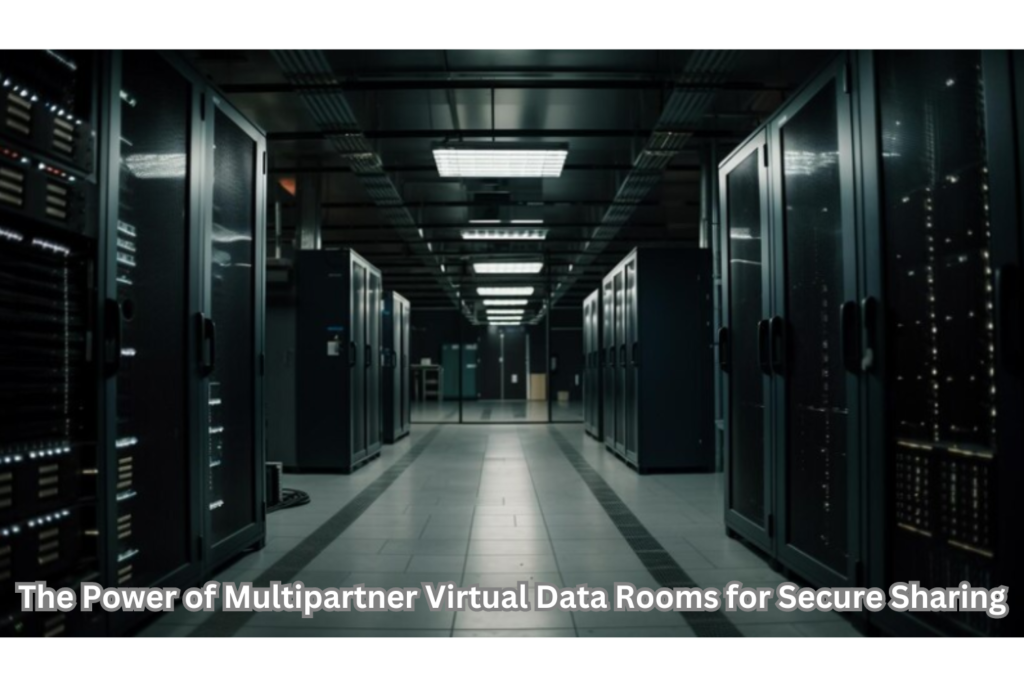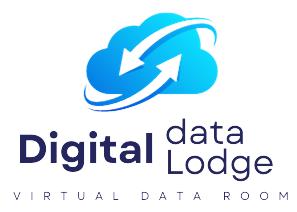multipartner virtual data room: In a constantly changing world, companies are changing how they work with partners and handle their data. The M(VDR) is a revolutionary idea that addresses the growing need for practical cooperation and safe data exchange. The dynamic world of Multipartner VDR will be examined in this piece, along with its unique qualities, advantages, real-world applications, and the critical importance of data protection.

Detailed Examining Multipartner VDR Features
Multipartner Virtual Data Rooms catalyzes efficient collaboration with numerous partners, not just a data management tool. Here’s a closer look at a few of the noteworthy characteristics: The Power of Multipartner Virtual Data Rooms
- Advanced Security: Multipartner VDRs are built on security. They utilize robust encryption, multi-factor authentication, and granular access restrictions to guarantee the confidentiality of data and prevent unapproved access.
- Customizable Branding: With the customization options provided by multipartner virtual data rooms, businesses may imbue their virtual data rooms with their corporate identity. Partners benefit from a consistent and polished experience as a result.
- Document Management: In multi-partner partnerships, effective document management is essential. Multipartner VDRs streamline the process of organizing documents by facilitating the categorization, searching, and retrieval of crucial files.
- Real-time cooperation: These VDRs enable smooth collaboration in a world where real-time interactions are essential. Real-time document sharing, annotations, and comments facilitate productive collaborations.
- Audit Trails: Accountability and transparency are essential. Due diligence, compliance checks, and audits benefit significantly from the thorough audit trails that multipartner VDRs maintain.
Advantages of Using Multipartner Virtual Data Rooms
Let’s now examine the advantages of Multipartner VDRs: The Power of Multipartner Virtual Data Rooms.
1. Multi-Partner Collaboration: Collaborating with several partners in a safe environment is one of the most significant benefits. This facilitates the management of intricate collaborations and projects.
2. Improved Data Security: Data security is prioritized in multipartner VDRs. Businesses can ensure their data is secure because of granular access controls, multi-factor authentication, and robust encryption that keeps sensitive information safe.
3. Custom Branding: Allowing partners to imprint their brand on the VDR elevates professionalism and solidifies the organization’s reputation while inspiring trust.
4. Effective Document Management: You can finally end document anarchy. By streamlining document management, these virtual document repositories (VDRs) ensure that partners can quickly and efficiently retrieve the required papers.
5. Global Accessibility: Access to data from anywhere is crucial in today’s networked society. Multipartner VDRs facilitate international partnerships and remote work by providing worldwide accessibility.
6. openness and Accountability: Multipartner VDRs’ thorough audit trails guarantee transparency and accountability, which is crucial for adhering to regulations and upholding confidence.
Multipartner VDR in Real-World Applications
Let’s now examine a few real-world scenarios where Multipartner VDRs are excellent:
1. Joint Ventures: Sharing sensitive information is frequently necessary when two or more firms collaborate on a joint venture. Multipartner virtual data rooms (VDRs) offer a safe environment for such partnerships.
2. Supply Chain Management: Data sharing between several parties is frequently necessary in intricate supply chain networks. Multipartner VDRs expedite this procedure and guarantee that all parties have access to the relevant data.
3. International Expansion: Businesses growing internationally frequently need to work with agencies and partners in other nations. These partnerships are facilitated by multipartner VDRs, which do not depend on geographical boundaries.
Research and Development: Multipartner VDRs offer a secure way for organizations working together on research and development initiatives to exchange and handle sensitive research data.The Power of Multipartner Virtual Data Rooms
The Vital Aspect of Information Security
Multipartner VDRs are built on the foundation of data security. These platforms take considerable precautions to guarantee the security of your private data. Strong data security is achieved in part by some security mechanisms, such as:
1. Advanced Encryption: To safeguard data while it’s in transit and at rest, multipartner VDRs use cutting-edge encryption technology. This implies that the data stays encrypted and unreadable even in the event of a compromise.
2. Multi-Factor Authentication (MFA): MFA requires users to present many forms of identity to access the VDR, adding protection. The possibility of unwanted access is significantly decreased by doing this.
3. Levels of Access Control: Different partners require different access levels to other data. With multipartner VDRs, you can decide who can view, change, and share documents in detail, ensuring that only the people who require access to the data can access it. The Power of Multipartner Virtual Data Rooms
4. Audit Trails: These VDRs produce thorough audit trails that include recordings of every action made on the platform to uphold accountability and transparency. This is necessary for regulatory compliance in addition to helping track user activity.
Multipartner virtual data rooms (VDRs) represent the cutting edge of safe data management in a world where unauthorized access and data breaches can have dire implications. They offer a protected digital environment where several partners can collaborate with assurance, knowing that cutting-edge security protocols safeguard their private data.
To sum up
Businesses looking to collaborate securely with several partners can find a dynamic solution in multipartner virtual data rooms. They offer an extensive platform for today’s complex business partnerships with features like superior security, customizable branding, effective document management, real-time communication, and thorough audit trails.

Organizations engaged in joint ventures, supply chain management, international expansion, and cooperative research and development will find Multipartner VDRs invaluable due to their many advantages, including improved data security, effective document management, and global accessibility.
Multipartner VDRs’ fundamental component of data security is still protecting sensitive data with multi-factor authentication, granular access controls, enhanced encryption, and thorough audit trails. Multipartner VDRs provide the capabilities and peace of mind needed to establish and manage productive multi-partner partnerships in a world where data security is critical. The Power of Multipartner Virtual Data Rooms
of data security in today’s corporate environment and Multipartner Virtual Data Rooms’ (VDRs) crucial role in protecting sensitive data.
Data Security’s Importance
Data security is essential to contemporary corporate operations, not just a box to be checked on a compliance list. It matters as follows. Confidentiality: Companies deal with a wealth of private information, including client and financial data. Financial losses and reputational harm are possible outcomes of data breaches. Confidential information is kept that way, thanks to data security.
2 Integrity: Accurate and unaffected information is what data integrity means. This is essential for sectors like finance and healthcare to guarantee compliance and prevent expensive mistakes.
3. Compliance: Strict laws that regulate several businesses require safe data management and storage. Legal action and heavy fines may follow noncompliance.
4. Competitive Advantage: Companies with a robust data security program are more likely to gain the confidence of customers, partners, and investors, which gives them an advantage over rivals.The Power of Multipartner Virtual Data Rooms
Multipartner VDR Method for Protecting Data
Data security is a primary consideration in the design of multipartner virtual data rooms. This is how they manage to do it:
1. Advanced Encryption: To protect data while it’s in transit and at rest, multipartner VDRs use cutting-edge encryption technology. This implies that the data will stay unreadable even in the event of unwanted access.
2. Multi-Factor Authentication (MFA): MFA requires users to present many forms of identity to access the VDRegree of protection. The possibility of unwanted access is significantly decreased by doing this.
3. Granular Access Controls: In multi-partner projects, not every partner should have access to every piece of data. With the help of multipartner VDRs, you can create precise access restrictions that specify who may access, modify, and share documents, ensuring that the right people have access to the data.
4. Audit Trails: The platform creates an audit trail by carefully documenting every operation inside the VDR. This helps with user activity tracking and offers transparency for regulatory compliance.
Strong Data Security in Multipartner VDRs Has Advantages
Using Multipartner VDR’s security features has several advantages. The Power of Multipartner Virtual Data Rooms
1. Peace of Mind: You can feel more at ease knowing that state-of-the-art technology protects your data. Without having to worry about data breaches all the time, you can concentrate on running your business.
2. Regulatory Compliance: Multipartner VDR’s security features help organizations in highly regulated sectors like finance and healthcare stay compliant. This is essential to prevent fines and penalties.
3. Improved Reputation: Gaining the trust of investors, partners, and clients can be accomplished by showcasing your dedication to data security. It lets them know that you value their security and privacy. Multipartner Virtual Data roomThe Power of Multipartner Virtual Data Rooms
4. Effective Cooperation: The security characteristics of Multipartner VDR do not hinder cooperation. Document collaboration and secure sharing are effortless, even in delicate circumstances like court cases or joint ventures.
Examining Data Security Alternatives
Even though Multipartner VDR is unquestionably a strong option, it’s vital to consider other options, particularly if your company has particular needs. Consider the following alternate data security solutions: The Power of Multipartner Virtual Data Rooms.
1. safe Cloud Storage: Many businesses choose Google Workspace or Microsoft OneDrive as their secure cloud storage options. These solutions provide the ease of cloud-based storage and robust data security safeguards.
2. Dedicated Data Security Tools: You can include a variety of data security tools and software in your current systems. Advanced data security measures are available in solutions from companies like Trend Micro, McAfee, and Symantec. multipartner virtual data room
3. In-House Solutions: You might think about in-house data security solutions, depending on the size and requirements of your company. Businesses must spend on IT staff and infrastructure to create and maintain security measures.
In conclusion, data security is critical in today’s corporate environment. Protecting sensitive data is essential since data breaches can have disastrous results. The robust security features of Multipartner VDR, including audit trails, multi-factor authentication, granular access controls, and encryption, provide a complete answer to data security issues in multi-partner partnerships.
But keep in mind that the particular demands of your company and any applicable laws may affect the data security solutions you select. You may choose the ideal solution for your data security needs by investigating options like secure cloud storage, specialized data security technologies, or internal solutions. This will ensure that your important data is protected throughout multi-partner collaborations.
Understanding Virtual Data Rooms with Multiple Partners
Multipartner Virtual Data Rooms (VDRs) have become an essential tool for enterprises in an era characterized by international partnerships and safe data management requirements. These cutting-edge platforms provide a safe and effective means of managing confidential data and collaborating with different stakeholders, meeting the complex requirements of multi-partner partnerships. This section will examine the fundamental idea behind multipartner VDRs and how they differ from other data management and collaboration tools.
Multipartner Virtual Data Room (VDR) Definition
A multi-partner virtual data room is a private, secure online space for managing, storing, and exchanging sensitive data with several partners. Multipartner VDRs, as opposed to general file-sharing platforms or conventional data storage techniques, are designed to address the needs of multi-partner collaborations, where controlled access and data protection are crucial. multipartner virtual data room
Principles Crucial to Multipartner VDR
Multipartner VDRs are essential in multi-partner cooperation because of the following features:multipartner virtual data room.
1. Multi-Partner Collaboration: A variety of stakeholders, such as clients, suppliers, investors, legal teams, and more, can be accommodated by these VDRs. They offer a safe space where everyone may work together effectively. The Power of Multipartner Virtual Data Rooms
2. Sturdy Security Measures: Multipartner VDRs’ dedication to data security is their pillar. They use multi-factor authentication, granular access controls, robust encryption, and thorough audit trails to keep sensitive data private and safe from unwanted access.
3. Custom identity: Businesses can imprint their identity on the VDR to give users a polished and unified experience. This strengthens brand identity while also improving the platform’s aesthetic.
4. Efficient Document Management: Document management is crucial in multi-partner collaborations. Multipartner VDRs simplify the process by providing document search, retrieval, and classification tools. The Power of Multipartner Virtual Data Rooms
5. Real-Time Collaboration: Successful businesses rely on teamwork. Multipartner VDRs enable real-time annotation, commenting, and document sharing, enabling teams to collaborate productively across regional boundaries.
6. Audit Trails: It’s critical to uphold accountability and transparency. Multipartner VDRs produce thorough audit trails that offer an unambiguous record of every action made on the platform. This capability is helpful for due diligence, audits, and compliance checks. multipartner virtual data room
Multipartner VDR Benefits
After going over the salient characteristics, it’s critical to comprehend the advantages Multipartner VDRs offer to multi-partner collaborations:
1. Seamless Multi-Partner Collaboration: Multipartner virtual data rooms (VDRs) establish a safe and cooperative setting where several partners can effectively collaborate. This is particularly helpful in situations involving various parties, such as complicated projects, mergers and acquisitions, court cases, etc.
2. Enhanced Data Security: Multipartner VDRs’ sophisticated security measures offer comfort at a time when data breaches are a regular concern. Granular access controls, multi-factor authentication, encryption, and thorough audit trails all work to protect data.
3. Custom Branding: Adding your organization’s branding to the VDR strengthens the identification of your business and adds a professional touch. It’s an indication of your dedication to providing your partners with a consistent user experiencemultipartner virtual data room
4. Efficient Document Management: Multipartner VDRs put an end to document anarchy. By streamlining the process of classifying, searching for, and retrieving crucial documents, these systems ensure that data is readily available while saving time.
5. Global Accessibility: Access to data from anywhere is crucial in today’s networked society. Multipartner virtual data rooms (VDRs) offer worldwide accessibility, facilitating remote work and cross-border cooperation by removing geographical constraints.
6. openness and responsibility: Multipartner VDRs’ comprehensive audit trails and safe data storage guarantee openness and accountability. This is essential for staying in compliance with regulations and upholding partner trust.
Practical Applications of Multipartner VDRs
To better understand the real-world uses of Multipartner VDRs, let’s examine a few examples: multipartner virtual data room.
1. Mergers and Acquisitions (M&A): Many private documents are exchanged during M&A transactions. Multipartner VDRs expedite this procedure and guarantee that all participants can access the required data safely.
2. Legal Proceedings: Sensitive legal documents that need to be shared and managed securely are frequently handled by law firms. Multipartner virtual document repositories (VDRs) offer a secure environment for organizing and working together on these papers, streamlining the legal process.
3. Supply Chain Management: Data sharing between several parties is frequently necessary in intricate supply chain networks. Multipartner VDRs streamline this procedure and guarantee that all parties can access the data required for efficient supply chain operations.
4. International Expansion: Businesses that want to grow internationally frequently need to work with agencies and partners in other nations. These cross-border cooperation are made possible by multipartner VDRs, which open up opportunities for global expansion.
To sum up, a Multipartner Virtual Data Room is an effective tool for collaboration and safe data management for numerous partners. Businesses involved in intricate multi-partner collaborations will find it the perfect option due to its primary features, including multi-partner collaboration, strong security measures, personalized branding, effective document management, real-time communication, and thorough audit trails.
The advantages of utilizing Multipartner VDRs highlight its importance in today’s business environment, including improved data protection, effective document management, worldwide accessibility, transparency, and accountability. Examples from the real world in M&A, litigation, supply chain management, and global expansion show how adaptable and valuable they are across various sectors.multipartner virtual data room
Multipartner VDRs are positioned to be vital in guaranteeing secure data administration and smooth cooperation amongst varied stakeholders as the business sector progresses toward embracing multi-partner collaborations and global expansion. multipartner virtual data room
Principles of Virtual Data Rooms for Multiple Partners
Successful partnerships in today’s globalized corporate environment sometimes entail several partners, each with specific responsibilities and functions. Maintaining safe collaboration and data management can be tricky in these intricate situations. Multipartner Virtual Data Rooms (VDRs) are quite valuable for this situation. These digital platforms have an extensive feature set that makes them invaluable, and they are specifically designed to satisfy the requirements of multi-partner cooperation. In this section, we’ll look more closely at the salient characteristics of Multipartner VDRs.

Partnership with Multiple Parties
The capacity of Multipartner VDRs to support and enable multi-partner cooperation is one of their most notable advantages. A wide range of stakeholders, including clients, suppliers, investors, legal teams, and more, are catered to by these VDRs. It is typical for several parties to be involved in a single project or commercial process, each with varying access and interaction requirements. Multipartner VDRs offer a safe and cooperative setting where all parties can effectively cooperate. multipartner virtual data room
Sturdy Security Procedures
Security is a top priority in the digital environment, and Multipartner VDRs take this seriously. These systems use cutting-edge security techniques to guarantee data integrity and confidentiality. Among the noteworthy security features are:
Advanced Encryption: Advanced encryption safeguards data in the VDR while in transit and at rest. This guarantees that the data will remain encrypted and unreadable even in the event of illegal access.
Multi-Factor Authentication (MFA): MFA requires users to present several forms of identity to gain access to the VDR, adding a degree of protection. The possibility of unwanted access is significantly decreased by doing this.
Granular Access Controls: Access to all data should not be equal for all parties. Administrators of multipartner VDRs can decide who can see, change, and distribute documents with more precise access controls. By doing this, data is kept in the hands of people who require it.
Audit Trails: Accountability and transparency are essential. Multipartner virtual data rooms (VDRs) uphold comprehensive audit trails, essentially logs of every action made on the platform. This tool is helpful for due diligence, audits, and compliance inspections.
Personalized Labels
Building a dependable and expert image in the business sector requires careful consideration of branding. With the customization capabilities of multi-partner virtual data rooms, businesses can imprint their corporate identity on the virtual data room. This is about giving partners a smooth and polished experience, not just a pretty feature. Personalized branding improves user experience and upholds brand identity.
Sustainable Document Administration
Without the proper tools, managing documents in multi-partner collaborations can become uncontrollable. The process is simpler because multi-partner VDRs offer tools for effective document management. Users may quickly locate the required information, organize papers into categories, and search for specific files. Time is saved, and the possibility of lost or unavailable documents is reduced.
Intelligent Coordination
Audit Trails for Accountability and Transparency
Multipartner VDRs’ thorough audit trails are essential to guarantee accountability and transparency. All of the activities that are done on the platform are documented by these audit trails. Audit trails provide accountability and transparency at every stage of the collaboration, whether used to track user actions, monitor document modifications, or supply proof of regulatory compliance.
In the next section, we will discuss the advantages businesses can get by utilizing these critical Multipartner VDR features in more detail. Multipartner VDRs have the potential to revolutionize the management and execution of multi-partner collaborations, offering benefits such as improved data protection and streamlined communication.
A virtual data room: what is it?
Differences Between SharePoint and VDR:

1. Security: Security and secrecy are the main concerns in the design of VDRs. They provide sophisticated security features, including granular access controls, multi-factor authentication, and encryption. Despite being safe, SharePoint is a more versatile document management tool.
What Does a Virtual Data Room Serve as?
1. Mergers and Acquisitions (M&A): Businesses must share a significant number of sensitive data during M&A transactions.
2. Legal Proceedings: To securely maintain and exchange legal documents, legal teams and law firms employ VDRs. Ensuring confidentiality for clients and adhering to legal requirements are crucial.
3. Fundraising and Investments: To exchange financial and operational data with possible lenders or investors, startups and organizations looking for funding frequently use VDRs.
4. Real Estate Transactions: To streamline the purchasing and selling process, real estate brokers and agencies utilize VDRs to store and exchange documents about real estate.
5. Clinical Trials and Healthcare: VDRs are used by the pharmaceutical and healthcare sectors to securely maintain and exchange patient data and results from clinical trials.
6. Supply Chain Management: Companies may use VDRs in intricate supply chain networks to exchange vital information with partners and suppliers, ensuring the smooth flow of products and information.
How Can I Set Up an Online Data Room?
A virtual data room must be created in the following steps:
1. Choose a VDR Supplier: Select a reliable VDR supplier to meet your company’s demands. There are numerous suppliers out there, and they all have distinct features and security protocols.
2. Set Up Your VDR: After deciding on a supplier, you must configure your VDR. Usually, this entails setting up your VDR area, making an account, and enrolling.
3. Arrange the Files: Upload the files and information you wish to share and keep in the VDR. For convenience, arrange them logically into folders and groups.
Set Up Access Restrictions: Set the permissions and access levels for users. Declare which users can download, edit, and see which files or folders. Only authorized people can access sensitive data thanks to granular access controls.

